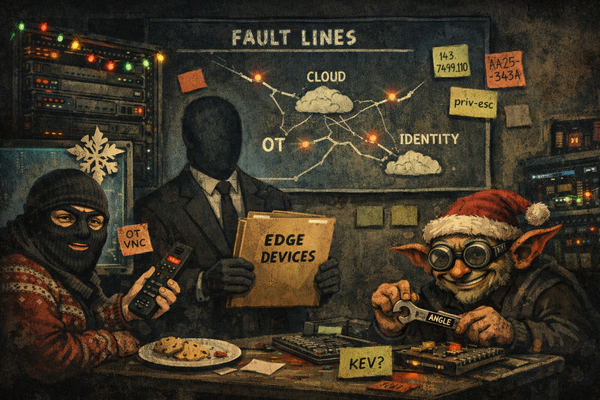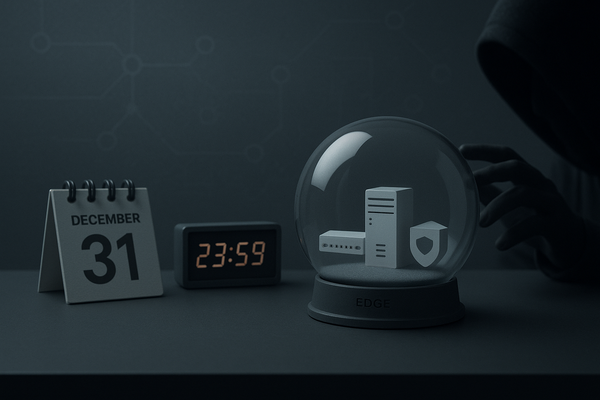Vo1d Botnet: Exploiting Android TV Devices for Cybercriminal Gain
The Vo1d botnet is a sophisticated malware campaign that has compromised approximately 1.6 million Android TV devices worldwide. Originating from cybercriminal groups exploiting outdated software and security flaws...



Who's in YOUR TV!?
EDITOR'S NOTE: I'm testing the next generation of the AlphaHunt- the research goes a bit deeper, a bit more directed and a bit more "peer" reviewed. The layout may still need some work... feedback welcome (just hit reply! :))
TL;DR
Key Points
-
- The Vo1d botnet targets Android TV devices, exploiting vulnerabilities to control 1.6 million devices globally.
- Cybercriminals leverage these compromised devices for financial gain through ad fraud and DDoS attacks.
-
- The botnet's rapid expansion highlights the vulnerabilities in IoT devices, particularly those with outdated software.
- Manufacturers and users must prioritize security updates and awareness to mitigate these threats.
-
- Countries most affected include India, the United States, and China, with significant increases in compromised devices.
- Targeted sectors include television and streaming services, advertising, and telecommunications.
-
- The Vo1d botnet is linked to other IoT-targeting malware like Mirai, Gafgyt, and Mozi, indicating a broader trend in IoT exploitation.
- Cybersecurity firms must enhance detection and response strategies to combat these evolving threats.
Summary
The Vo1d botnet is a sophisticated malware campaign that has compromised approximately 1.6 million Android TV devices worldwide. Originating from cybercriminal groups exploiting outdated software and security flaws, the botnet is primarily motivated by financial gain. It is used for activities such as advertisement fraud and DDoS attacks, monetizing its vast network of compromised devices.
The botnet's rapid growth from 1.3 million to 1.6 million devices within a few months underscores the vulnerabilities present in IoT devices, particularly those with outdated operating systems and insecure default settings. Countries like India, the United States, and China are heavily targeted due to the high number of Android TV devices in use.
The Vo1d botnet is part of a broader trend of IoT exploitation, similar to other malware like Mirai and Gafgyt. It poses significant challenges for sectors such as television and streaming services, advertising, and telecommunications. To combat this threat, recommendations include implementing comprehensive security update programs, developing awareness campaigns, and fostering collaboration between cybersecurity firms and regulatory bodies.
In the short term, an increase in IoT device exploitation and ad fraud is expected, while long-term forecasts predict the evolution of IoT malware tactics and regulatory changes. Enhanced collaboration in cybersecurity will be crucial to address these challenges effectively.
Attribution
Origin
The Vo1d botnet is a sophisticated malware campaign targeting Android TV devices, exploiting vulnerabilities in their operating systems to create a large network of compromised devices. It controls approximately 1.6 million devices globally, indicating a significant operational scale. The botnet's origin is linked to cybercriminal groups that exploit outdated software and security flaws in smart devices.
Motivation
The primary motivation behind the Vo1d botnet is financial gain. It is utilized for various cybercriminal activities, including advertisement fraud, proxy services, and potentially credential theft. By controlling a vast number of devices, the operators can monetize their activities through means such as selling access to the botnet for DDoS attacks or using the devices for click fraud.
Historical Context
The Vo1d botnet represents a continuation of the trend where cybercriminals exploit Internet of Things (IoT) devices for malicious purposes. Historically, botnets have evolved from traditional computer-based networks to include IoT devices, which are often less secure and more vulnerable to exploitation. The Vo1d botnet's growth reflects the increasing sophistication of malware and the expanding attack surface presented by smart devices.
Timeline
- August 2024: Initial reports of the Vo1d botnet began to surface, indicating its presence in the cyber threat landscape.
- September 2024: The botnet was reported to have infected over 1.3 million Android TV devices.
- February 2025: The botnet's size grew to approximately 1.6 million devices, indicating rapid expansion and adaptation of its strategies.
Countries Targeted
- India - Significant increase in infections, with reports indicating an 18-fold rise in compromised devices.
- United States - A notable number of infections reported, with devices being used for various cybercriminal activities.
- China - Targeted due to the high number of Android TV devices in use.
- Brazil - Reports of infections, although less than in the top three countries.
- Germany - Some infections reported, but significantly lower than the leading countries.
Sectors Targeted
- Television and Streaming Services - The primary sector affected, as the botnet targets Android TV devices.
- Advertising - The botnet is used for ad fraud, impacting digital marketing sectors.
- Telecommunications - Companies in this sector are indirectly affected due to the compromised devices.
- Consumer Electronics - Manufacturers of Android TVs face reputational risks due to security vulnerabilities.
- Cybersecurity - The rise of the Vo1d botnet poses challenges for cybersecurity firms trying to mitigate such threats.
Links to Other Malware
The Vo1d botnet is related to other malware campaigns that exploit IoT devices, particularly those targeting Android systems. Similar malware includes Mirai and its variants, which also utilize compromised devices for DDoS attacks and other malicious activities.
Similar Malware
Similar malware includes:
- Mirai: Known for its DDoS capabilities and targeting IoT devices.
- Gafgyt: Another botnet that exploits IoT devices for similar purposes.
- Mozi: A peer-to-peer botnet that also targets IoT devices and is involved in DDoS attacks.
Threat Actors
The Vo1d botnet is believed to be operated by a group of cybercriminals who specialize in exploiting vulnerabilities in smart devices. Their tactics include using backdoors to install additional malware and leveraging the botnet for financial gain through various cybercriminal activities.
Breaches Involving This Malware
There have been no specific high-profile breaches directly attributed to the Vo1d botnet as of now, but its activities have raised significant concerns regarding the security of IoT devices and the potential for future breaches involving compromised devices.
Recommendations, Actions, Suggested Pivots, Forecasts and Next Steps..
(Subscribers Only)


![[DEEP RESEARCH] Zero-Days Are a Distraction: 2025’s Biggest Losses Were Stolen Tokens + OAuth](/content/images/size/w600/2025/12/zz-3.png)


